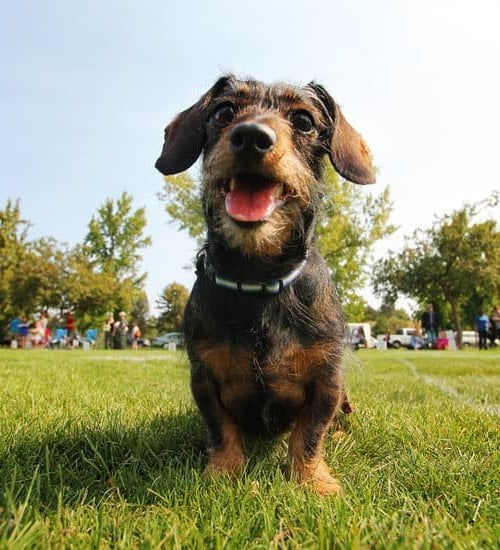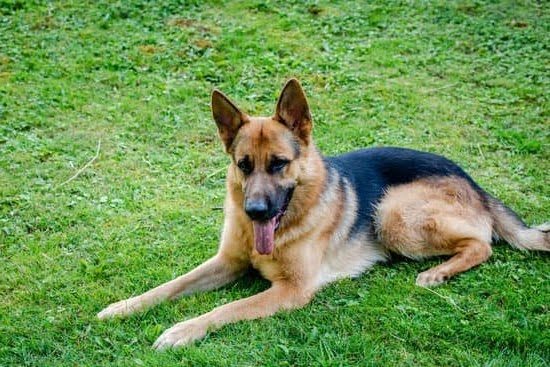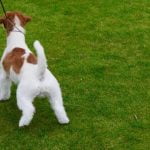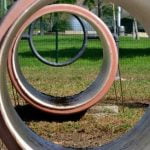Can you train a dog to not eat everything in sight? Understanding the behavior behind why dogs eat everything is the first step in addressing this issue. Dogs have a natural instinct to forage and scavenge for food, which can lead them to eat whatever they come across. This behavior can be frustrating and potentially dangerous for both the dog and its owner.
The constant eating habits of dogs can pose serious health risks, including obesity, gastrointestinal issues, and the ingestion of harmful substances. In order to ensure the well-being of our furry friends, it is important to address this behavior and explore ways to train a dog to not eat everything in sight.
In this article, we will delve into the possibilities of training a dog to not eat everything, exploring positive reinforcement techniques, establishing consistent training routines, redirecting their behavior through alternative activities, and knowing when to seek professional help from a dog trainer or behaviorist. By understanding the behavior behind why dogs eat everything and implementing effective training methods, we can work towards creating a safer and healthier environment for our canine companions.
The Dangers of Constant Eating
Obesity and Weight Management
Constant eating can lead to obesity in dogs, which can have serious health consequences. Obesity can increase the risk of various medical conditions such as diabetes, heart disease, and joint problems. It’s important for dog owners to monitor their pet’s food intake and ensure they are not overeating.
Gastrointestinal Issues
Overeating or consuming non-food items such as rocks or toys can also lead to gastrointestinal issues in dogs. This includes vomiting, diarrhea, and possible blockages in the digestive system. In severe cases, surgery may be required to remove foreign objects from the dog’s stomach or intestines.
Nutritional Imbalances
When dogs constantly eat non-food items, it may indicate a nutritional deficiency that needs to be addressed. Eating inappropriate items can affect the absorption of essential nutrients from regular food, leading to imbalances in the dog’s diet. This can result in various health issues and deficiencies if not properly managed.
Overall, constant eating poses serious health risks for dogs and should be addressed through proper training and management strategies to ensure the well-being of our furry friends. Can you train a dog to not eat? With patience, consistency, and positive reinforcement techniques, it is possible to modify a dog’s behavior and reduce the risks associated with constant eating habits.
Can You Train a Dog to Not Eat
Dogs are natural scavengers and have a strong sense of smell, which leads them to explore their environment through their mouths. Additionally, some dogs may have a genetic predisposition to being more prone to constant eating. This behavior can also be triggered by stress, anxiety, or boredom. Furthermore, dogs may eat everything in sight if they are not getting enough physical exercise or mental stimulation.
The Dangers of Constant Eating: Health Risks for Dogs
Constant eating can lead to serious health issues for dogs, including obesity, digestive problems, and potential poisoning from ingesting toxic substances. For example, some human foods such as chocolate, garlic, onions, and grapes can be harmful to dogs if consumed in large quantities. Additionally, consuming non-food items like rocks or toys can cause intestinal blockages that may require surgical intervention.
Yes, you can train a dog to not eat everything they come across. With patience and consistent training methods, it is possible to modify your dog’s behavior and discourage constant eating tendencies. By understanding the root causes of the behavior and implementing positive reinforcement techniques and redirection strategies, you can effectively teach your dog what is acceptable to eat and what is not.
| Behavior | Reason |
|---|---|
| Constant eating | Natural scavenging instinct spurred by curiosity or boredom |
| Health risks | Obesity / Digestive issues / Poisoning / Intestinal blockages |
Positive Reinforcement Techniques
Dogs are known for their curious and explorative nature, which can often lead to them eating everything in sight. This behavior is a result of their natural instincts and can be exacerbated if they are not properly trained. However, the good news is that you can train a dog to not eat everything by using positive reinforcement techniques.
Positive reinforcement involves rewarding your dog for exhibiting the desired behavior, in this case, not eating everything in sight. This can be done by using treats, praise, or toys as rewards when your dog chooses not to eat something they shouldn’t. For example, if your dog walks away from a piece of food on the ground when told to “leave it,” you can immediately reward them with a treat and verbal praise.
Consistency is crucial when using positive reinforcement techniques to train your dog not to eat everything. Be sure to reward your dog every time they exhibit the desired behavior and refrain from eating something they shouldn’t. Over time, this will help them understand that choosing not to eat everything results in positive outcomes.
Another important aspect of using positive reinforcement techniques is to provide alternative activities for your dog. This means offering them appropriate toys or engaging in activities that mentally stimulate and distract them from their instinctual urge to eat everything in sight. By redirecting their focus onto more suitable behaviors, you’re effectively training them to make better choices.
| Positive Reinforcement Technique | Description |
|---|---|
| Rewarding with Treats | Using small treats as rewards for good behavior |
| Praise and Affection | Offering verbal praise or petting as positive reinforcement |
| Providing Alternative Toys | Supplying appropriate toys or activities to redirect their focus |
Consistency Is Key
When it comes to training a dog to not eat everything in sight, consistency is key. Dogs thrive on routine and establishing consistent training routines can help reinforce the desired behavior. Here are some ways to establish and maintain training routines:
- Set a Feeding Schedule: Providing regular, balanced meals for your dog can help reduce their urge to constantly eat objects they shouldn’t. Make sure to feed your dog at the same times each day.
- Designate Playtime: Regular exercise and playtime can help keep your dog mentally stimulated and less likely to engage in destructive behaviors like eating non-food items. Set aside time each day for interactive play and exercise.
- Training Sessions: Incorporate short training sessions into your daily routine to reinforce positive behavior. Use treats and praise to reward your dog for following commands and ignoring objects they shouldn’t eat.
By establishing consistent routines for feeding, exercise, and training, you can create a structured environment that reinforces good behavior and reduces the likelihood of your dog eating things they shouldn’t.
Remember, consistency is not only important in creating these routines but also in maintaining them over time. By sticking to a consistent schedule, you can help your dog learn what is expected of them and reduce their urge to indulge in inappropriate eating behaviors.
Ultimately, by providing a consistent environment for your dog, you can train them to not eat everything in sight through routine reinforcement of positive behavior.
Redirecting the Behavior
It is possible to train a dog to not eat everything in sight, but it requires redirecting their behavior towards more appropriate activities. Providing alternative activities for dogs can help satisfy their natural curiosity and desire to explore, without resorting to consuming things they shouldn’t. By offering engaging and stimulating alternatives, you can help discourage your dog from constantly trying to eat everything.
Here are some ways you can redirect your dog’s behavior and provide alternative activities:
- Interactive toys: Invest in puzzle toys or treat-dispensing toys that will keep your dog mentally stimulated and entertained.
- Chew toys: Offer a variety of safe and durable chew toys to keep your dog occupied and prevent them from seeking out inappropriate items to chew on.
- Physical exercise: Regular walks, playtime, and physical activity can help expend your dog’s energy and reduce their urge to engage in undesirable behaviors like eating non-food items.
Consistently providing these alternative activities for your dog will help shift their focus away from eating everything they encounter. By keeping them engaged with positive outlets for their energy and curiosity, you can effectively train them to resist the temptation of ingesting harmful objects.
In addition to redirecting their behavior, it is important to continue reinforcing good behavior with positive reinforcement techniques, as well as maintaining consistency in training routines. These efforts combined can aid in successfully training a dog to not eat everything.
Seeking Professional Help
Signs That Professional Help Is Needed
If you have tried various techniques to train your dog not to eat everything and have seen little to no improvement, it may be time to seek the expertise of a professional. Signs that indicate it’s time to consult a dog trainer or behaviorist include persistent and uncontrollable eating behaviors, aggressive behavior when food is taken away, and a lack of response to positive reinforcement techniques.
Additionally, if your dog’s constant eating habits pose a serious risk to their health, seeking professional help is crucial.
The Role of a Dog Trainer or Behaviorist
A qualified dog trainer or behaviorist can assess your dog’s eating behavior and identify any underlying reasons for their constant need to eat. They can provide personalized training plans and techniques based on your dog’s specific needs and behaviors. Furthermore, they can offer guidance on how to effectively communicate with your dog and establish clear boundaries regarding eating habits.
When Consultation Is Necessary
Consulting a professional should not only occur when the situation feels dire. In fact, seeking the assistance of a dog trainer or behaviorist as soon as you notice concerning eating behaviors in your dog can prevent the issue from escalating further. Early intervention
Conclusion
In conclusion, training a dog to not eat everything requires a great deal of patience and persistence. It is important to understand that this behavior is natural for dogs, as they explore the world around them with their mouths. However, the dangers of constant eating, including health risks and potential poisoning, highlight the importance of addressing this behavior through proper training techniques.
Positive reinforcement techniques can be highly effective in teaching a dog to not eat everything. By rewarding good behavior with treats, praise, or toys, you can encourage your dog to make better choices. Consistency is key in this process, as establishing and maintaining training routines will help reinforce the desired behavior over time.
In addition to positive reinforcement and consistency, redirecting the behavior by providing alternative activities for your dog can also be beneficial. Engaging your dog in physical exercise, interactive playtime, or mental stimulation can help redirect their focus away from constantly eating everything in sight.
And if you find yourself struggling to make progress with training on your own, seeking professional help from a certified dog trainer or behaviorist can provide valuable guidance and support. Ultimately, with patience and persistence, it is possible to train a dog to not eat everything and ensure their safety and well-being.
Frequently Asked Questions
How Can I Stop My Dog From Eating Everything?
One way to stop your dog from eating everything is to ensure they have plenty of mental and physical stimulation. Providing them with chew toys, interactive puzzles, and regular exercise can help redirect their focus away from eating non-food items.
Can You Train a Dog Not to Eat Human Food?
Yes, it is possible to train a dog not to eat human food. The key is consistent training and positive reinforcement. By teaching your dog commands like “leave it” and “drop it” and rewarding them for obeying, you can help them understand that human food is off-limits.
Can Dogs Choose Not to Eat?
Dogs can choose not to eat for various reasons. Illness, stress, or changes in their environment can affect their appetite. If a dog consistently refuses to eat for more than a day or two, it’s important to seek guidance from a veterinarian to rule out any underlying health issues.

Welcome to the blog! I am a professional dog trainer and have been working with dogs for many years. In this blog, I will be discussing various topics related to dog training, including tips, tricks, and advice. I hope you find this information helpful and informative. Thanks for reading!





